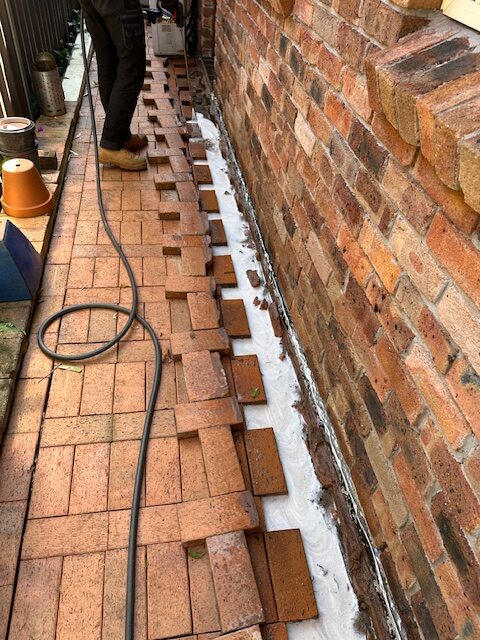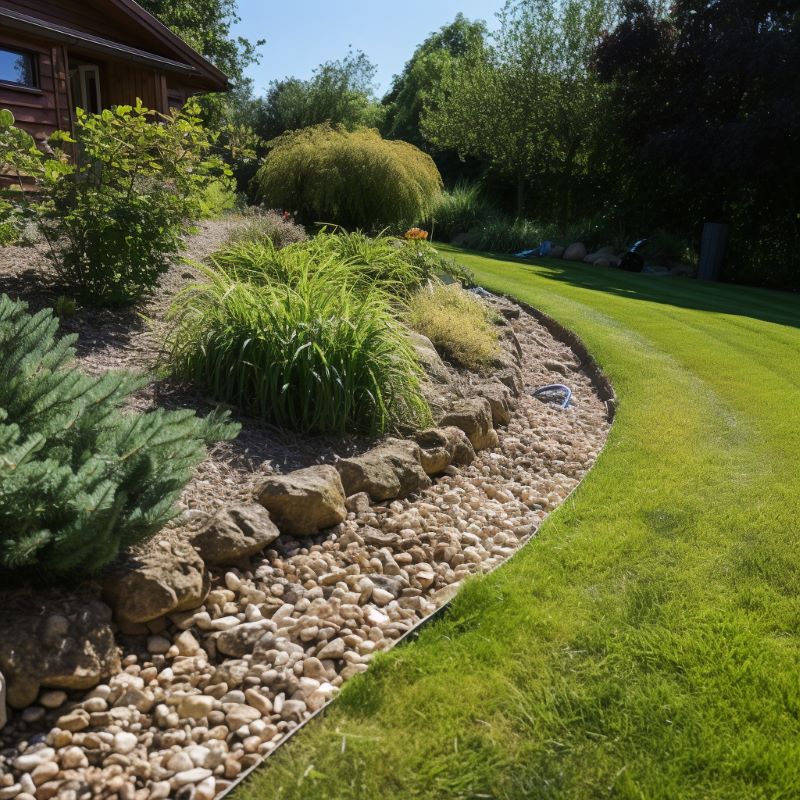Landscaping significantly increases the aesthetic appeal and market value of your property, but it’s essential to approach these enhancements with an understanding of how to maintain crucial termite barriers. These protective systems are vital in shielding your home from destructive termite infestations. Unfortunately, specific landscaping choices and maintenance routines can unintentionally undermine these barriers, weakening their protective functions. This comprehensive guide will equip you with essential strategies and insights to ensure that your landscaping decisions support rather than compromise your termite defenses, thereby effectively preserving these critical systems around your home.
Explore the Essential Functions of Termite Barriers for Home Safety
Termite barriers represent a crucial line of defense, consisting of either physical or chemical measures that are installed around or beneath your property to prevent termite access. Every homeowner must prioritize establishing a comprehensive termite management system, and it is vital to understand the specific type of barrier currently installed for effective property care. One straightforward way to verify this information is to check the details located in your electrical meter box. These barriers play a significant role in protecting structures, particularly in regions such as Sydney’s Hills District, where termite activity is notably prevalent.
- Physical Barriers: Composed of robust materials like stainless steel mesh or graded stones, these barriers are positioned beneath a building to effectively thwart termite tunneling attempts.
- Chemical Barriers: This approach involves applying liquid termiticides to the soil surrounding a structure, thereby creating a treated zone that deters or eradicates termites from accessing your property.

Recognizing Landscaping Practices That Threaten Termite Barriers
Numerous common landscaping practices can inadvertently damage or undermine the effectiveness of termite barriers, creating critical vulnerabilities that may lead to severe infestations. Understanding these practices is essential for maintaining robust protection against termites and ensuring the integrity of your home.
1. Planting Too Close to Your Home
When plants, shrubs, or trees are positioned in close proximity to your house, they can introduce a variety of complications:
- Roots may penetrate physical barriers or disrupt the treated soil in chemical barriers, significantly reducing their protective effectiveness.
- Dense vegetation can retain moisture near the building’s foundation, fostering an inviting environment for termite populations to thrive.
2. Adding New Soil or Mulch
Bringing in layers of soil or mulch near your foundation can create a bridge over chemical barriers, enabling termites to bypass these essential protections. Organic mulch is particularly concerning as it can serve both as a food source and a shelter for termites, transforming it into an attractive habitat for these destructive pests.
3. Paving and Hardscaping Projects
The installation of paving, patios, or retaining walls in close proximity to your property can disrupt existing termite barriers. The excavation and soil movement necessary for these projects may compromise the chemical seal or create gaps in physical barriers, leading to increased vulnerabilities and potential termite infestations.
4. Irrigation System Considerations
Poorly designed or overly saturated irrigation systems can inundate the soil surrounding your foundation. This not only diminishes the effectiveness of termiticides in chemical barriers but also creates a favorable environment for termite proliferation, increasing the risk of infestation.

Implementing Landscaping Techniques to Protect Termite Barriers
1. Ensure Safe Clearance from Your Home
- Maintain a minimum distance of 50 cm between plants and trees and your home’s foundation, creating a protective barrier that helps prevent termite access.
- Choose smaller, non-invasive plants that are less likely to develop extensive root systems capable of interfering with your barriers, thereby enhancing their effectiveness.
2. Choose Termite-Resistant Mulch Options
- Opt for inorganic mulches such as gravel or stone, or consider utilizing termite-resistant materials like cedar or cypress chips to minimize risks associated with termite infestations.
- Limit mulch piles to a maximum height of 5 cm and ensure they are maintained at least 15 cm away from the foundation to reduce moisture retention and discourage termite activity.
3. Avoid Disruption of Barriers During Landscaping
- Consult with a professional prior to undertaking any digging or installation of landscaping features near your home to avoid disturbing the termite barriers or any termite baits.
- If soil alterations are necessary, it’s wise to have the barrier reinspected and potentially retreated to ensure ongoing protection against termites and other pests.
4. Thoughtful Design Considerations
- Position irrigation systems away from the foundation to prevent excessive moisture accumulation near the barrier, which can attract termites and compromise your home’s defenses.
- Install root barriers for larger trees to prevent roots from encroaching on the termite barrier and causing potential damage to the protective systems.
- Be mindful of termite reticulation pipes to avoid damaging them during landscaping activities, ensuring that your termite protection remains intact.
Urgent Steps to Take if Your Termite Barrier Has Been Compromised
If landscaping activities or natural events have disturbed your termite barrier, it is crucial to take immediate action to protect your home:
- Schedule a Professional Inspection: A thorough termite inspection is essential to identify vulnerabilities and assess whether termites have breached your protective barriers.
- Reinforce Your Barrier: Depending on the inspection outcomes, physical barriers may need repairs, while chemical barriers might require retreatment or a top-up to restore their effectiveness.
- Implement Regular Monitoring: Routine inspections for termites are vital to ensure that your barrier remains intact and your property stays protected from infestations.
Landscaping Solutions That Strengthen Termite Protection
Through thoughtful planning and strategic design, your landscaping can effectively support and enhance your termite protection efforts:
- Incorporate gravel paths or decorative stones along the foundation to create a dry zone that deters termite activity and reduces moisture retention.
- Utilize raised garden beds with adequate clearance from the house's foundation to ensure minimal moisture retention around the base of your home.
- Regularly trim vegetation to promote proper ventilation and reduce moisture buildup, creating an inhospitable environment for termites and minimizing the risk of infestations.

Landscaping can be crafted with intention to enhance, rather than undermine, your termite barriers. By developing a comprehensive understanding of how various landscape designs impact termite protection, you can create a beautiful, pest-free home environment. For expert termite advice or assistance in maintaining your barriers, connect with our knowledgeable team today. Let us partner with you to secure your home while you design the landscape of your dreams.
The Article: Termite Barriers for Effective Landscaping Solutions first appeared on https://writebuff.com.
The Article Termite Barriers: Essential Solutions for Landscaping Was Found On https://limitsofstrategy.com



This topic on landscaping and termite barriers resonates with me, particularly as a homeowner who has recently taken on some outdoor improvements. It’s intriguing how aesthetic choices can inadvertently affect the structural integrity of our homes. I’ve always viewed landscaping primarily as an opportunity for beautification, but your emphasis on termite barriers highlights a critical aspect that many overlook.
It’s great to hear how this topic resonates with you as a homeowner diving into outdoor improvements. Landscaping can often be seen as just about aesthetics — making everything look nice and tidy. But, as you pointed out, there’s this underlying layer of practicality that’s easy to miss, especially when you’re caught up in picking the right flowers or stone paths.
I completely relate to your perspective. When I first started thinking about outdoor improvements, I definitely got lost in the frills of flowers and decorative stones. It’s easy to forget that landscaping plays a crucial role in functionality—like drainage, shade, and even providing a habitat for local wildlife. I’ve been learning more about native plants and how they can contribute to both beauty and sustainability while being less demanding in terms of maintenance.
I completely relate to your perspective on landscaping. It’s easy to get caught up in the idea of beautification, especially with all the trends and instant inspiration available online. When I first started working on my yard, I was all about the aesthetics, but I soon learned that certain choices could either contribute to or detract from the long-term health of my home.
I totally understand where you’re coming from. It’s so tempting to chase after those perfect, picture-perfect yards we see online. Social media makes it all look so easy and instant, but the reality is often a lot more nuanced. I went through a similar phase when I first started experimenting with my garden. I was focused solely on making things look ” Instagrammable,” and I didn’t consider how my choices might impact the ecosystem of my backyard.
I appreciate your insights on the journey through landscaping. It’s interesting how our initial focus can shift as we learn more about the nuances involved. I’ve been there too—initially swept up by the latest trends and picture-perfect yards. But over time, I’ve come to see that what looks good in a magazine doesn’t always translate to healthy, sustainable choices in our own spaces.
It’s interesting how that shift happens, isn’t it? The initial focus on aesthetics can be so tempting, especially with all the stunning images floating around. I went through a similar phase where I was mesmerized by the latest trends, only to realize many of those choices didn’t fit my environment or the lifestyle I wanted to create.
“I’m so glad you found your way to a more balanced approach! If you’re looking for resources that combine aesthetics with sustainability, check out this insightful guide I came across.”
https://baysidemowing.com.au/ParentAler
It’s great to hear your perspective on landscaping and how it ties into the structural integrity of our homes. I’ve also had to navigate that balance when making improvements to my own outdoor space. It’s fascinating how easy it is to focus on the aesthetics—those vibrant flowers or a well-placed patio—while overlooking the practicalities, like termite barriers.
It’s interesting to hear about your experiences navigating the balance between aesthetics and practicality in landscaping. Many people fall into the trap of focusing solely on the visual aspects, which can certainly bring immediate satisfaction and delight to our outdoor spaces. However, when you start digging deeper—pun intended—you realize there’s a whole foundation of practical considerations that can’t be ignored.
You’ve hit on such an important point about the balance between aesthetics and practicality in landscaping. It’s so easy to get swept away by the visual appeal—using vibrant flowers or trendy garden features that look good on social media. But as you mentioned, there’s a solid foundation of practical considerations that can really shape the long-term success of an outdoor space.
You’ve really captured a key tension in landscaping. When I think about outdoor spaces, it’s fascinating how a garden can serve both as a visual retreat and a functional environment. The practicality of choosing the right plants—considering their maintenance needs, climate adaptability, and how they fit into the local ecosystem—can make all the difference in how a space feels over time.
You’re spot on about that tug-of-war between aesthetics and practicality in landscaping. It’s like the garden version of a catwalk versus a usability test—one’s all about being the star of the show, and the other is whispering, “Hey, can we actually walk here without tripping over our own ambition?”
“I’m glad you resonate with that point! If you’re looking to blend beauty with practicality in your landscaping projects, check out this resource for some insightful tips and ideas.”
https://baysidemowing.com.au/ParentAler
It’s true—we often get swept up in the look of our outdoor spaces. Those vibrant flowers and stylish patios can easily overshadow the behind-the-scenes necessities like termite barriers. It’s like creating a beautiful painting while forgetting to secure the canvas.
You bring up such an interesting point. It’s so easy to get caught up in the aesthetics of our outdoor spaces, like choosing vibrant flowers or designing a cozy patio, and forget the critical groundwork that holds everything together. I think about it in terms of home maintenance as a whole—how many times have we redone a room or planted a beautiful garden and not considered the roof above us or the insulation in the walls?
It’s definitely a balancing act, isn’t it? Those standout features like vibrant flowers or that perfect patio can easily steal the spotlight. But you’ve hit on something really important with practicalities like termite barriers. It’s all too easy to get swept away in the aesthetics, but I’ve learned that the best outdoor spaces not only look good but also function well and protect our homes.
I’m glad you found the balance between aesthetics and practicality interesting! If you’re looking to enhance your outdoor space while keeping those important structural considerations in mind, check out this helpful guide for tips and insights.
https://baysidemowing.com.au/VideoLeap
It’s interesting you mention the balance between aesthetics and practicality. When we’re designing our outdoor spaces, it’s easy to get swept up in how things look—those colorful blooms or the perfect spot for a gathering. However, integrating elements like termite barriers or proper drainage can really save us from future headaches.
“I completely agree! Balancing aesthetics and practicality can be a challenge, but it’s essential for a thriving outdoor space. If you’re looking for tips on maintaining that balance, check out this insightful resource!”
https://baysidemowing.com.au/DigestiveHealth
You make a great point about the importance of practicality in outdoor design. It’s easy to become excited by vibrant flowers and beautifully arranged seating areas, but neglecting foundational elements like termite barriers and drainage can lead to significant issues down the road.
“Absolutely! For a deeper dive into creating that perfect balance between beauty and functionality in your outdoor space, take a look at this great resource!”
https://baysidemowing.com.au/SmoothieRecipes
Your experience really highlights an essential aspect of landscaping that often gets sidelined. It’s true that while we’re arranging those vibrant flowers or choosing a perfect patio spot, we can easily forget about the hidden challenges. Termite barriers may not be as visually appealing as a blooming garden, but they play a crucial role in preserving our homes.
Your observations about landscaping really hit home. It’s so easy to get drawn into the aesthetic aspects of our outdoor spaces. I remember when I revamped my own garden, I was completely absorbed in choosing the right plants and deciding where to place the seating area. There’s something incredibly satisfying about creating a space that feels inviting and alive.
“I’m glad you found the discussion valuable! If you’re looking for tips on balancing aesthetics and practicality, check out this resource that can help enhance your outdoor space while ensuring its durability.”
https://baysidemowing.com.au/ParentAler
I appreciate your thoughts on landscaping and termite barriers. It’s fascinating how our outdoor spaces can impact our homes in ways that extend beyond just looks. You’re definitely not alone in thinking of landscaping as a chance to make things beautiful, but it’s great to see you’re considering the underlying factors like structural integrity.
You raise an important point about the intertwined relationship between aesthetics and functionality in landscaping. It’s easy to fall into the trap of solely focusing on visual appeal, but as you noted, there’s so much more beneath the surface—like soil health, foundation stability, and pest control.
It’s cool to hear how you’re approaching your landscaping with that mindset—balancing aesthetics with structural integrity can be tricky. Most folks just think of plants, colors, and layout, but those choices can have some serious implications, especially when it comes to critters like termites.
Ah, the delicate dance of landscaping and termite defenses—who knew gardening could be such a battleground? It’s like trying to set up a beautiful picnic while simultaneously warding off an army of hungry ants. I must admit, the concept of termite barriers has prompted a certain level of paranoia in my own gardening endeavors. The last thing I want is for my begonias to turn into a termite buffet!
It’s true, landscaping can sometimes feel like a finely choreographed dance, and you’ve captured the essence of that beautifully. Balancing the aesthetics of your garden with effective termite defenses is like hosting a feast where you need to impress your guests while keeping the food away from pesky critters. The beauty of a vibrant garden does come with its challenges, but we can certainly find ways to navigate this tricky terrain.
I can totally relate to the struggle of trying to maintain a beautiful garden while keeping those hidden threats at bay. It really does feel like a constant balancing act, doesn’t it? When you put so much time and effort into nurturing your plants, the last thing you want is for them to fall victim to termites or other pests. I’ve even caught myself peeking under my pots, half-expecting to see little termite armies marching out to wreak havoc.
Maintaining a garden always feels like a delicate dance, doesn’t it? The effort we put into each plant makes it that much more disheartening when those hidden threats come lurking, ready to disrupt our hard work. Your experience of peeking under pots resonates deeply; it’s almost as if we’re always on guard, expecting a surprise invasion of pests like termites.
It really does feel like a delicate dance, managing to strike the right balance between nurturing our plants and being vigilant against those hidden threats. I know that tension well—one minute, everything seems to be thriving, and the next, there’s an unexpected invader. It’s surprising how pests like termites can feel like uninvited guests at a celebration; they come in unnoticed and can disrupt everything you’ve worked for.
It’s interesting how the right drainage solutions can make the delicate balance of gardening feel a bit more secure, almost like having a safety net against those sneaky invaders we’ve all had to deal with.
‘Perimeter Drainage Solutions for Effective White Rock Services’
https://baysidemowing.com.au/perimeter-drainage-solutions-for-effective-white-rock-services/.
It’s true—the balance between nurturing our plants and keeping an eye on those hidden threats can feel like walking a tightrope. When you invest time and passion into your garden, it can be incredibly disheartening when unexpected pests show up, especially ones like termites, who can wreak havoc without much warning. They are like those guests who know just when to arrive to disrupt the party, leaving us scrambling to address the damage.
Yeah, it really is like walking a tightrope sometimes, isn’t it? You spend so much time tending to your plants, and then the lurking threats seem to show up out of nowhere. I get that feeling of peeking under pots, half-expecting to find those sneaky little critters plotting their next move. It can be surprising how quickly things can go from flourishing to floundering if you’re not vigilant.
It really is a balancing act, isn’t it? I think that’s part of what makes gardening so rewarding. You’re constantly in tune with your plants, and that connection heightens your awareness of every little change. It’s fascinating how those sneaky critters can transform what feels like a peaceful sanctuary into a mini-thriller overnight.
“I totally relate to that feeling! If you’re looking for some tips to stay ahead of those sneaky pests and keep your plants thriving, check this out!”
https://baysidemowing.com.au/VideoLeap
It’s so true! The constant vigilance is part of the gardening experience, isn’t it? I get that feeling of peering under pots, half-expecting a little army of termites to be plotting their next move. It’s a bit nerve-wracking when you know how much work you’ve put into creating a haven for your plants.
You made a great point about that constant vigilance in gardening. It can feel like you’re on the lookout for any potential threats, and that includes everything from pests to diseases. I often find myself inspecting the underside of leaves, half-expecting those sneaky little critters to show up. It’s all part of being a caretaker for those plants we’ve nurtured.
Absolutely! That vigilance is what makes gardening both rewarding and a bit nerve-wracking. If you’re looking for tips on how to protect your plants from pesky pests, check out this resource I found—it might help ease those worries!
https://baysidemowing.com.au/KetoBreads
You’ve really captured that essence perfectly. The vigilance can indeed feel like an extra layer of responsibility, like we’re not just caring for plants, but also defending them against a battalion of unseen threats. It’s a funny juxtaposition, really, pouring love and energy into creating a beautiful space while keeping one eye on the lookout for potential invaders.
You’ve nailed it—the gardening struggle is real! It’s like hosting a fancy dinner party where uninvited guests might be lurking just outside the door. Termites can be the unwanted crashers trying to sneak in and dine on your begonias before you’ve even poured the lemonade.
“Absolutely, it really is a balancing act! If you’re looking to bolster your termite defenses without sacrificing your garden’s beauty, check out this helpful resource.”
https://baysidemowing.com.au/WildSurvive
You really captured the essence of gardening with that analogy. It’s true—sometimes it feels like the garden is a stage and we’re the hosts trying to keep everything in line while these pests are lurking, waiting for their moment. I’ve had my fair share of those unexpected guests like whiteflies and aphids, which can feel just as invasive.
This post brings to light a truly critical aspect of home maintenance that is often overlooked by homeowners who focus solely on the aesthetic elements of landscaping. It’s fascinating how the act of beautifying one’s yard can inadvertently conflict with the fundamental protective measures that keep our homes safe from pests like termites. The idea that what can enhance our outdoor space might also compromise our home’s defenses opens up a wider discussion about the balance between beauty and practicality in homeownership.
You bring up an important point about the delicate balance between aesthetics and practical safety. Many homeowners often focus on creating a beautiful outdoor space, but it’s crucial to remember that landscaping choices can directly affect the integrity of our homes. For instance, placing wood mulch too close to the foundation can create a perfect habitat for termites, compromising the home’s defenses.
Your insights on the importance of maintaining termite barriers while enhancing landscaping are spot on. It’s interesting how the aesthetics of our home can sometimes overshadow the need for practical maintenance. I’ve found that when planning my own garden, I had to carefully consider how planting certain trees or shrubs might affect the foundation and those vital barriers. For instance, deep-rooted plants can make their way into these protective systems, potentially disrupting them.